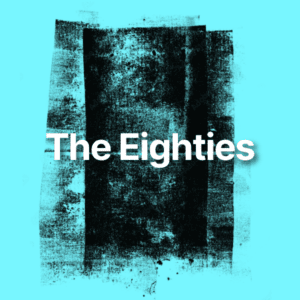"You have my love, engravers, and I share your emotion when you delicately pick up with your fingertips and raise to the light, a still damp small paper rectangle out of the press rollers. This print, this newborn, the child of your patient impatience (for the artist's self may only be defined through contradictions), holds a minimal part of the universe, a nothing, however essential, for it is the whole of intelligence."
Paul Valery
The exhibition The Introspective Line. Towards a History of Printmaking in Antioquia is a necessary encounter and part of Museo de Antioquia’s interest in raising a contemporary awareness on the importance of printmaking in the history of local art and its role in contemporary art practices.
This exhibition is the result of a research process which gathered together a representative group of artists who either found in printmaking a way to approach their formal and conceptual practice, or developed a significant connection with this technique over the course of their artistic process; the result is an exhibition that covers a broad period of time, techniques and thematic interests that can be traced back by way of the imprints left by more than eighty artists from several generations. However, even if ambitious, the selection has a number of gaps that we hope will feed future research projects, carried out not only by the museums, but by the academic field. In this particular case, the collections of Museo de Antioquia, Museo Universitario de la Universidad de Antioquia (University of Antioquia’s University Museum) and Museo de Arte Moderno de Medellín (Medellin Museum of Modern Art) were reviewed, all of which preserve outstanding examples of printmaking art that have become part of the collective memory and the history of this technique in our region and the country.
Over the course of this project many artists’ studios were visited and direct intimate conversations were held to allow expanding the dialogue beyond what has been preserved in the collections of the museums of the city, thereby providing a better and broader understanding of the different historical and artistic moments that have marked the poetics of local printmaking.
With eager eyes, we dive into each decade to trace out and acknowledge the singularity of the images with the aim of weighing the past and the present, an astonishing contrast grounded on the diversity of topics and techniques. This journey throughout the history of printmaking in Antioquia is enigmatic, not so much because of the chronological path proposed to us, but because of the interpretation of the images per se, as they suggest multiple meanings; in them, we are able to be observers of the world in which the authors have immersed themselves, to subsequently reveal their own inner vision, unique and clearly differentiated; at the same time, they allow us to comprehend the changes in the understanding of the function and role of art, the social and urban transformations and concerns, and our relationship with nature.
Some of the images have endured time, to a great extent, due to conventional alchemy —a common aspect of a discipline where we have no other choice than to «let ourselves be enraptured by the chemistry of the processes»— rather than because of their association to the social or political history that dominated many of the prints of the 1960s and 1970s. In this sense, we place great value on our teachers, those who opened the doors to printmaking as a standalone form of expression; moreover, they established the foundations of an educational processes, a task to which their students remain committed.
The different generations gathered among the «historical prints» and the contemporary pieces, cover more than 100 years of printmaking in Antioquia which reveal to us a range of well-differentiated experiences and interests, particularly those taking place at the turn of each decade, that threshold lets us perceive the cultural and specific changes associated to printmaking in Antioquia, which came along with urban transformations, the influence of the Coltejer Biennials, the curricular reforms on the higher education programs and, the opening of private studios, all of which made possible the consolidation of printmaking as an artistic form of expression in the 1980s.
By the end of the exhibition —aside from the retrospective account of the first part and the focal point formed of «historical prints» and pioneer artists— we turn our attention to contemporary graphic techniques as processes assumed with freedom, where the result no longer springs from the rigorous use of a specific technique, but from the experimentation and the blending of several of them, both traditional and contemporary, as a way to summarize ideas and produce images that go beyond mere reproduction.
Armando Montoya
Curator
Head of Arts Research Line, Corporación Banasta. Art and Culture Mediations.




